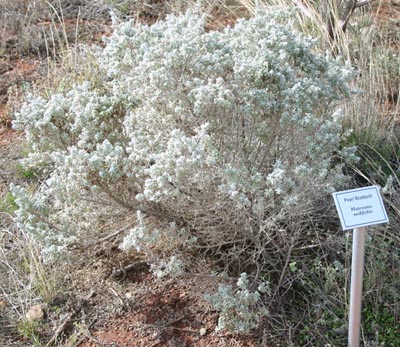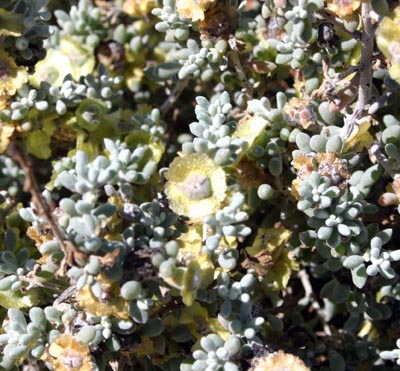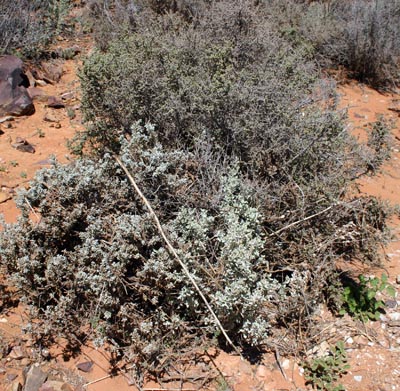


 |
 |
|
|||||
 |
|||||||
| |
|
|
|
|
|
||
|
|
|
|
|
|
|
|
|
|
Maireana sedifolia The pearl bluebush is quite common on Fowlers Gap, occuring chiefly along the ridges and and where there is regolith carbonate in the subsoil, particularly over the Adelaidean dolomitic shales that are common near the ridges. They are a regolith carbonate indicator species. Pearl bluebushes are compact shrubs, up to about 1 m high
and the leaves have a pearlescent lustre given by blue-grey tomentum.
They commonly occur together with the black bluebush
(Maireana pyramidata) and the bladder saltbush
(Attriplex vesicaria). |
 Above: Maireana sedifolia at the Broken Hill Living Desert Reserve.   Above: Maireana sedifolia (pearl bluebush) growing in front of Maireana pyramidata (black bluebush). |